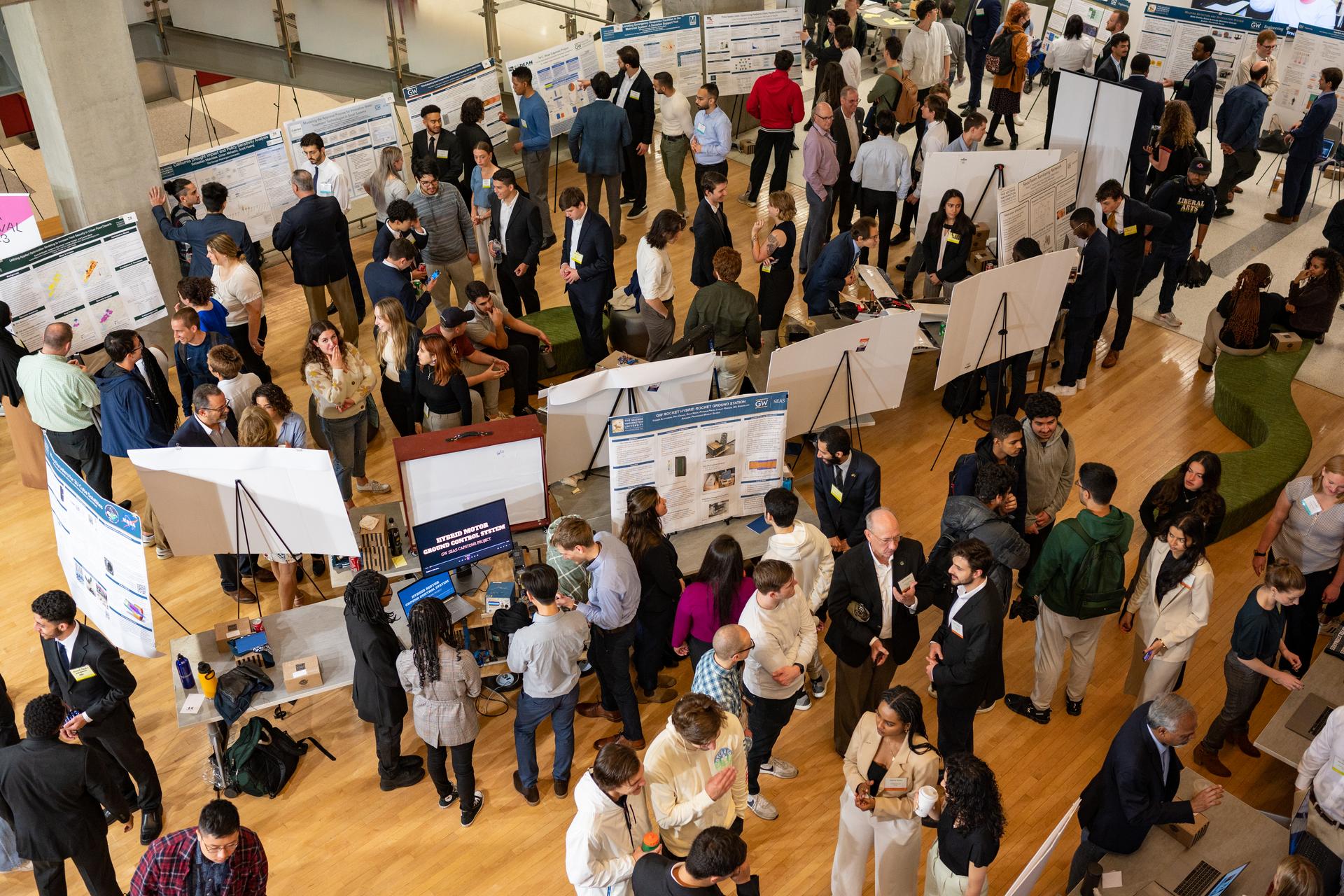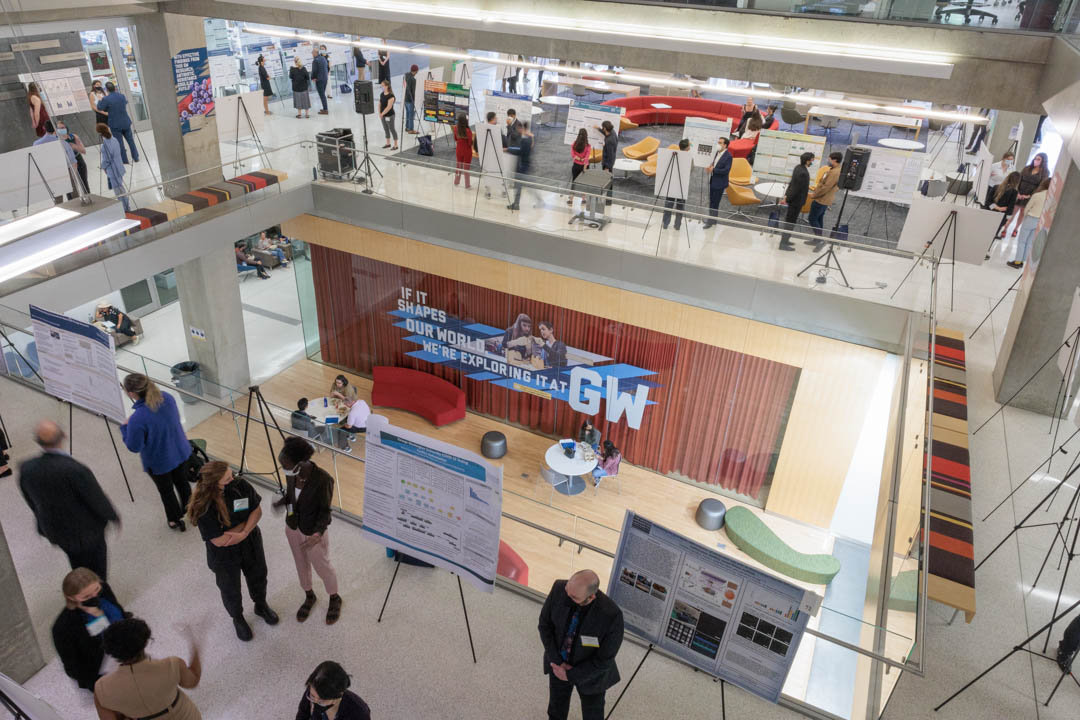As a competitive swimmer in middle school in the early 2000s, Elizabeth Gregorio was fascinated by Michael Phelps. How did he dominate the sport so completely? And how could she use what she learned about him to make herself go faster in the pool?
Decades later, Gregorio is still a swimmer—but is now expanding her interest in the movement of bodies in water as she works toward her Ph.D. in fluid dynamics at the George Washington University’s School of Engineering and Applied Science (GW Engineering). Gregorio’s interests have evolved, too. Rather than swimming speed, she’s interested in how Olympic divers create their almost splash-free dives. Unlike swimmers, who arrow into the water with their fingers pointed and hands together, divers execute a “rip entry” with their palms held perpendicular to the arms, then widen their arms through an underwater somersault after impact.
“They kind of pull the splash down with them,” Gregorio explained at GW Engineering’s 2023 Student Research & Design Showcase last week.
She was one of more than 250 presenters—undergraduates, master and Ph.D. students, postdoctoral scholars and research scientists—who presented their work across two crowded floors of Science and Engineering Hall Friday afternoon.
“I’m always just amazed when I hear from our students about all the incredible things that you all are doing, with that focus on having that impact on the world that really our school is all about,” GW Engineering Dean John Lach said at the showcase.
Many of the projects were indeed designed for global impact. Members of GW’s student-run Engineers without Borders group presented on two ongoing projects: a percolation pond that will help community members in Bhutiya, India, access water for agriculture during the dry season, and an education center in Yumbe, Uganda, that will serve an expanding population, including an influx of refugees from South Sudan. Both were designed with direct input from community members in the impacted countries, and members will visit Uganda this summer to continue the design process.
Other projects have impact closer to home. For a two-semester electrical and computer engineering capstone design project with assistant professor of practice Amir Aslani, seniors Thiare Cordova, Bakary Coulibaly, Amanda Long and Travis Root designed “AutoGrow,” an irrigation system with accompanying app that reduces labor requirements in GW’s GroW Garden. The fully solar-powered system automatically measures and records soil moisture levels, waters plants automatically when needed and uploads this data to the app, allowing volunteers to monitor garden conditions remotely. Since the GroW Garden provides produce for The Store and for Miriam’s Kitchen, it was particularly satisfying to feel they were having a direct impact on food insecurity in the area, the students said.
Lach also emphasized the interdisciplinary emphasis of the school and of the projects on display, citing “all the different ways that we connect engineering and computing with all the different disciplines around GW and the different dimensions of our society.”
Anne Schoonmaker, a senior in the Corcoran School of the Arts and Design, was one such presenter. Her textile project, a suit of women’s clothes embroidered with names, portraits and symbols from the early days of computer programming, explored the way what is now a lucrative male-dominated field was once considered “women’s work.” In the mid-20th century, companies advertised “computing” jobs to women with comparisons to domestic tasks like knitting and cooking. The grueling, minute work of embroidery, Schoonmaker said, helped her feel connected to those unthanked early programmers.
Some projects, like Gregorio’s, took recreation very seriously. For their biomedical engineering capstone, seniors Zein Ismail, Priyadharshini Seetharaman, Anasia Summersett and Emmanuel Zelalem designed a sensory basketball for the blind community with a sound device suspended inside.
In the United States, where 70 percent of the 52,000 school-aged children who are blind do not participate in even a limited physical education curriculum, the ball could create new possibilities for play. The team cut open a number of sacrificial basketballs trying to suspend the interior device in a way that didn’t upset the ball’s balance or weight—but the greatest challenge was to reseal it without losing air pressure. After several deflating attempts, the team tried a new kind of adhesive sealant. Initial pressure readings were good, but they didn’t know if they’d succeeded until they returned the next day to find their prototype still intact and well-inflated. Remembering the relief of that moment, the whole team seemed to light up.
“We were pretty excited,” Summersett said with a laugh.



